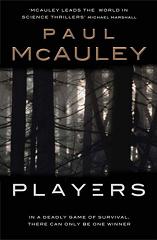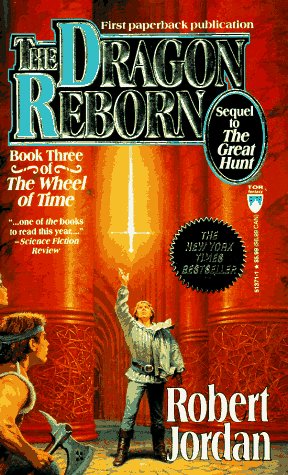
Players
Paul J. McAuley
390 pages
published in 2007
Paul J. McAuley used to be one of my favourite science fiction writers. Used to be, because unfortunately he seems to have chucked it in favour of writing crime and thriller novels. Probably for some silly reason as that they sell better. Not that I mind writers trying out other genres, but whereas I devoured McAuley’s science fiction novels, I couldn’t finish Mind’s Eye, the first of his thrillers I try, stopping halfway through and returned it to the library after it had been lying on my shelves accusively for a few weeks. It’s therefore with some trepidation that I approached Players, but I wanted to give him another chance. And it worked, in as far as that I finished this one.
What’s interesting is that Players shares its opening gimmick, a crime in an online game having repercussions in the real world, with Charlie Stross’ very different Halting State, which was also published this year. But whereas Charlie’s novel is set some years in the future and is quite clearly science fiction, Players is set in the here and now and quite clearly is not.



